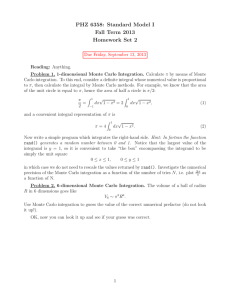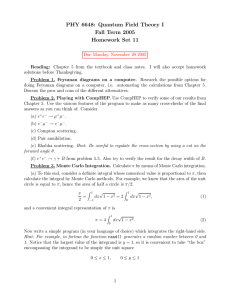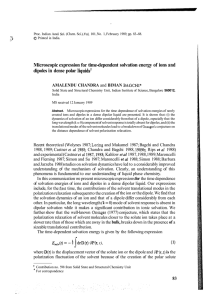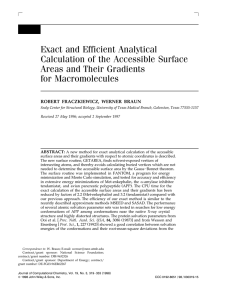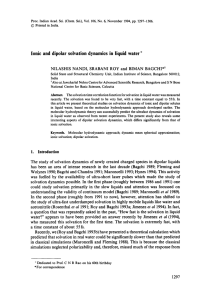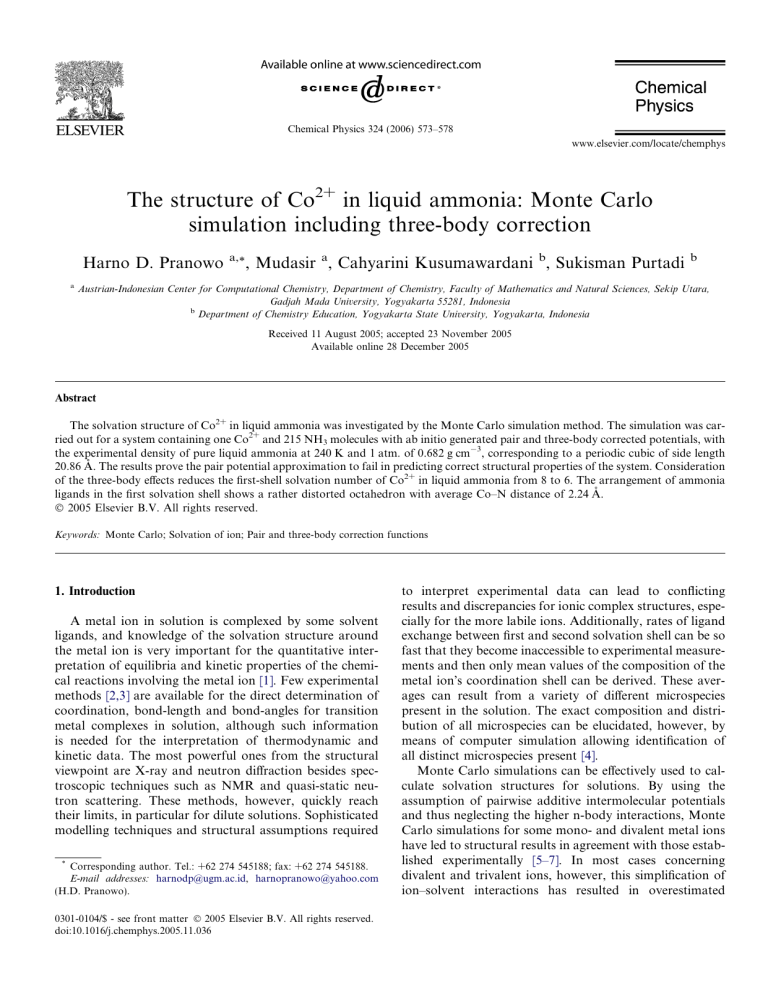
Chemical Physics 324 (2006) 573–578
www.elsevier.com/locate/chemphys
The structure of Co2+ in liquid ammonia: Monte Carlo
simulation including three-body correction
Harno D. Pranowo
a
a,*
, Mudasir a, Cahyarini Kusumawardani b, Sukisman Purtadi
b
Austrian-Indonesian Center for Computational Chemistry, Department of Chemistry, Faculty of Mathematics and Natural Sciences, Sekip Utara,
Gadjah Mada University, Yogyakarta 55281, Indonesia
b
Department of Chemistry Education, Yogyakarta State University, Yogyakarta, Indonesia
Received 11 August 2005; accepted 23 November 2005
Available online 28 December 2005
Abstract
The solvation structure of Co2+ in liquid ammonia was investigated by the Monte Carlo simulation method. The simulation was carried out for a system containing one Co2+ and 215 NH3 molecules with ab initio generated pair and three-body corrected potentials, with
the experimental density of pure liquid ammonia at 240 K and 1 atm. of 0.682 g cm3, corresponding to a periodic cubic of side length
20.86 Å. The results prove the pair potential approximation to fail in predicting correct structural properties of the system. Consideration
of the three-body effects reduces the first-shell solvation number of Co2+ in liquid ammonia from 8 to 6. The arrangement of ammonia
ligands in the first solvation shell shows a rather distorted octahedron with average Co–N distance of 2.24 Å.
2005 Elsevier B.V. All rights reserved.
Keywords: Monte Carlo; Solvation of ion; Pair and three-body correction functions
1. Introduction
A metal ion in solution is complexed by some solvent
ligands, and knowledge of the solvation structure around
the metal ion is very important for the quantitative interpretation of equilibria and kinetic properties of the chemical reactions involving the metal ion [1]. Few experimental
methods [2,3] are available for the direct determination of
coordination, bond-length and bond-angles for transition
metal complexes in solution, although such information
is needed for the interpretation of thermodynamic and
kinetic data. The most powerful ones from the structural
viewpoint are X-ray and neutron diffraction besides spectroscopic techniques such as NMR and quasi-static neutron scattering. These methods, however, quickly reach
their limits, in particular for dilute solutions. Sophisticated
modelling techniques and structural assumptions required
*
Corresponding author. Tel.: +62 274 545188; fax: +62 274 545188.
E-mail addresses: harnodp@ugm.ac.id, harnopranowo@yahoo.com
(H.D. Pranowo).
0301-0104/$ - see front matter 2005 Elsevier B.V. All rights reserved.
doi:10.1016/j.chemphys.2005.11.036
to interpret experimental data can lead to conflicting
results and discrepancies for ionic complex structures, especially for the more labile ions. Additionally, rates of ligand
exchange between first and second solvation shell can be so
fast that they become inaccessible to experimental measurements and then only mean values of the composition of the
metal ionÕs coordination shell can be derived. These averages can result from a variety of different microspecies
present in the solution. The exact composition and distribution of all microspecies can be elucidated, however, by
means of computer simulation allowing identification of
all distinct microspecies present [4].
Monte Carlo simulations can be effectively used to calculate solvation structures for solutions. By using the
assumption of pairwise additive intermolecular potentials
and thus neglecting the higher n-body interactions, Monte
Carlo simulations for some mono- and divalent metal ions
have led to structural results in agreement with those established experimentally [5–7]. In most cases concerning
divalent and trivalent ions, however, this simplification of
ion–solvent interactions has resulted in overestimated





